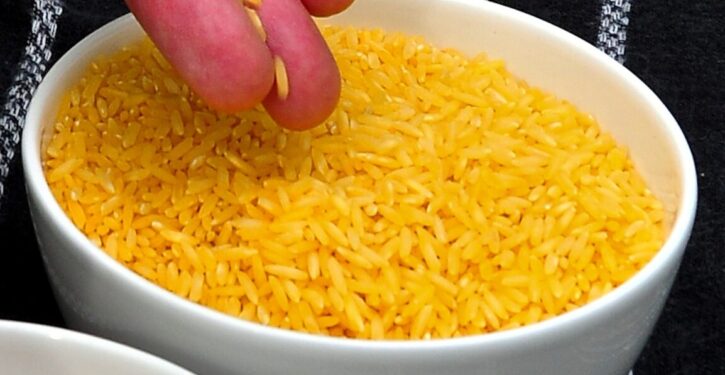
“Researchers have developed new rice varieties that are resistant to drought and heat—possibly useful for mitigating some of the consequences of climate change,” reports The Doomslayer. The new rice varieties will also be helpful to farmers in nations with rising populations who move into areas where it was historically difficult to grow rice due to higher temperatures and scarcer water.
France 24 reports that “a new strain” of rice developed by scientists in drought-plagued Chile “has generated hope that rice can be grown in seemingly inhospitable conditions” such as cold, dry parts of that South American country:
Using an innovative planting technique, Javier Munoz has been trialling the ‘Jaspe’ strain created by experts at the Agricultural Research Institute’s (INIA) Rice Breeding Program.
It is one of several research efforts worldwide to come up with less resource-hungry crops at a time of increased water scarcity in parts of the world due to global warming.
Using Jaspe in combination with a growing method that requires only intermittent watering cut the Munoz family’s water consumption in half in a country that has for generations cultivated rice in flooded fields, or paddies.
At the same time, yield rocketed, with each seed yielding about thirty plants — nearly ten times more than a conventional rice field.
Chile’s Maule and Nuble regions already contain the southernmost rice fields on Earth, closer to Antarctica than any other rice fields. The new rice strain may enable rice to be grown even further from the tropics.
Scientists are also working on making rice more heat-resistant. The Washington Post reports on how turning off a a temperature-sensitive gene could increase rice harvests and quality:
A team of scientists in China recently announced that they had identified a gene that, when overheated, appears to have a negative impact on crops, lowering yield and producing chalky-looking, pasty-tasting grains. But when that gene is deactivated — through gene editing or through breeding that capitalizes on a naturally occurring variant that doesn’t react to higher temperatures — rice plants produce more and better grains, according to a peer-reviewed paper published last month in the journal Cell.



